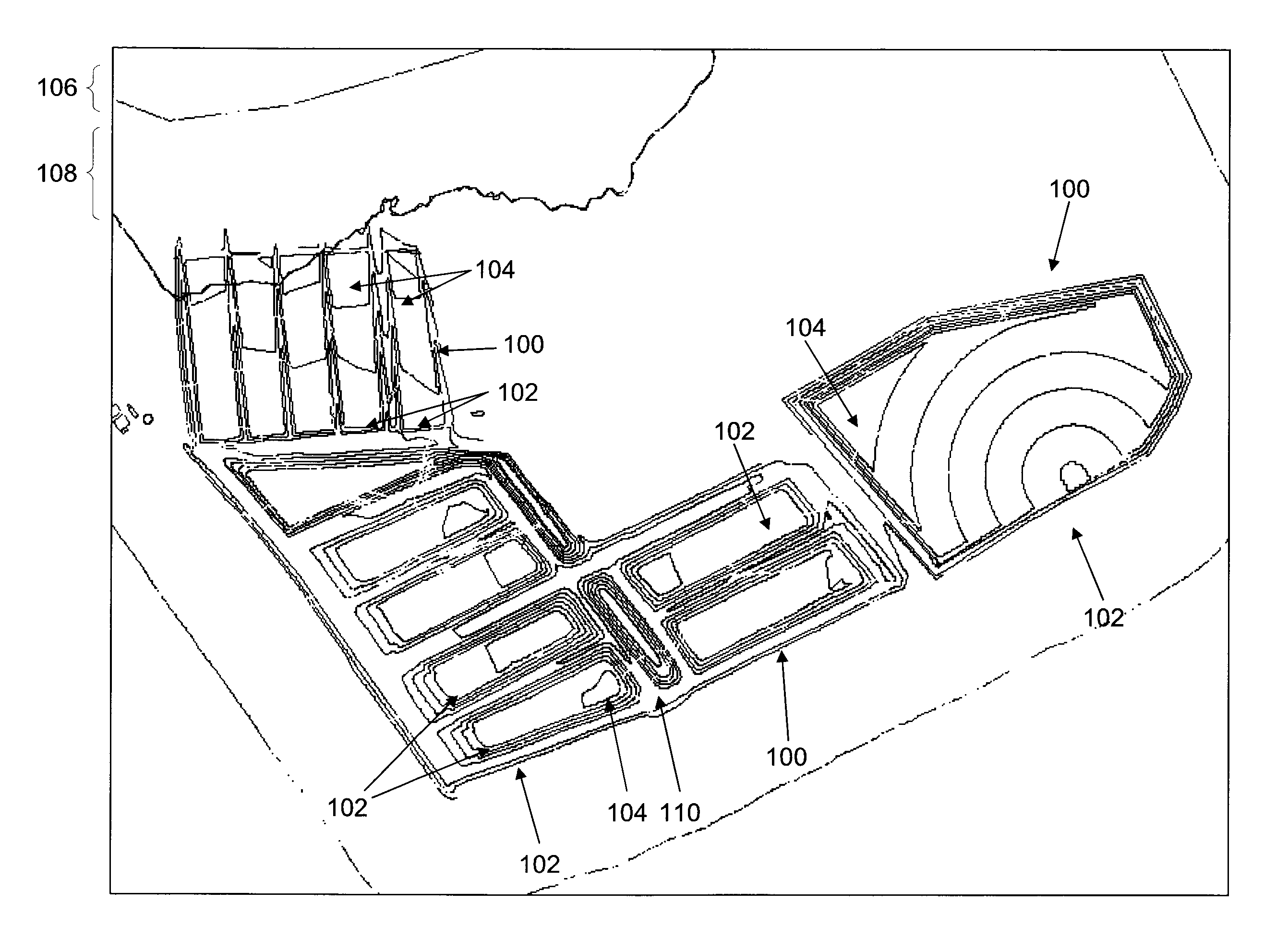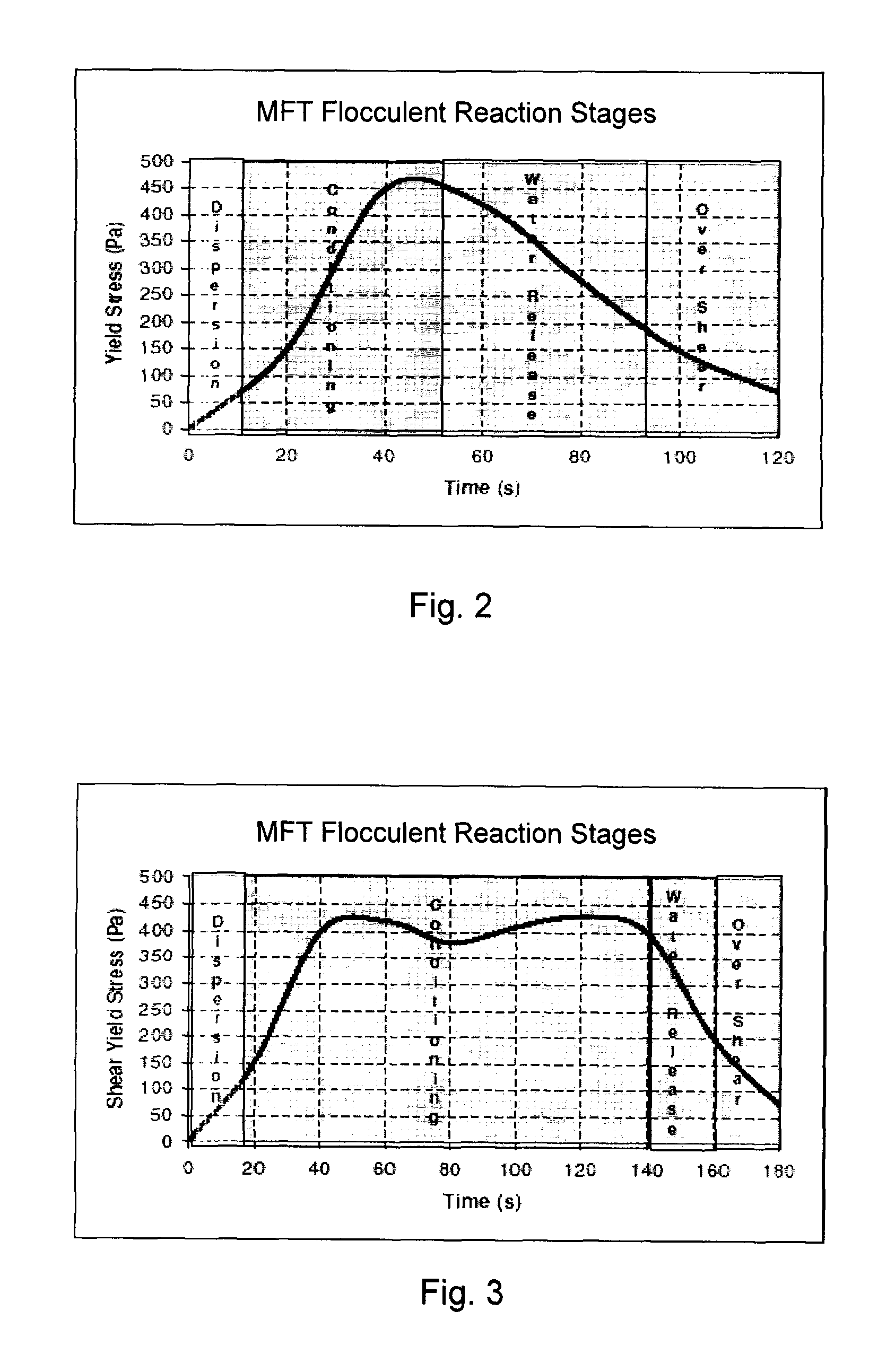Depositing and Farming Methods for Drying Oil Sand Mature Fine Tailings
a technology of oil sand and mature tailings, applied in the direction of drying solid materials, contaminated soil reclamation, lighting and heating equipment, etc., can solve the problems of slow consolidation rate, complex management of pond location, level control and reclamation, and limit the option of reclaiming tailings ponds, etc., to improve the overall drying of oil sand fine tailings, enhance the effect of evaporative drying mechanisms
- Summary
- Abstract
- Description
- Claims
- Application Information
AI Technical Summary
Benefits of technology
Problems solved by technology
Method used
Image
Examples
example 1
[0134]FIG. 23 provides details on a set of operational conditions and drying rates obtained in exemplary MFT deposition. The conditions are summarised below:
Cell dimensionsm × m165 × 43Cell Aream26110Cell slope%2MFT flow rategpm2000Total MFT depositedm32800Polymer flocculent dosageppm870FarmingNo plowing or harrowing
example 2
[0135]FIG. 24 provides details on another set of operational conditions and the drying rates obtained in exemplary MFT deposition. The conditions are summarised below:
Cell dimensionsm × m180 × 36Cell Aream26632Cell slope%2MFT flow rategpm2000Total MFT depositedm32000Polymer flocculent dosageppm1040FarmingPlowing on 9th day andharrowing on 15th day
example 3
[0136]For the deposition and farming methodology, embodiments of the method of the present invention were contrasted to other possible techniques.
[0137]The method has the ability to treat variable shear strength material in a fixed cell slope design that minimizes the channelling effects for the material produced from the MFT drying process. The co-implementation of post-deposition farming techniques, in conjunction with the cell slope design, further improves the drying and further addresses the challenges relating to thick deposits, and surface water drainage.
[0138]Embodiments of the method of the present invention allow improvements in materials handling with respect to other possible technologies, such as bag filters, filter presses, and track packing operations.
PUM
 Login to View More
Login to View More Abstract
Description
Claims
Application Information
 Login to View More
Login to View More - R&D
- Intellectual Property
- Life Sciences
- Materials
- Tech Scout
- Unparalleled Data Quality
- Higher Quality Content
- 60% Fewer Hallucinations
Browse by: Latest US Patents, China's latest patents, Technical Efficacy Thesaurus, Application Domain, Technology Topic, Popular Technical Reports.
© 2025 PatSnap. All rights reserved.Legal|Privacy policy|Modern Slavery Act Transparency Statement|Sitemap|About US| Contact US: help@patsnap.com



